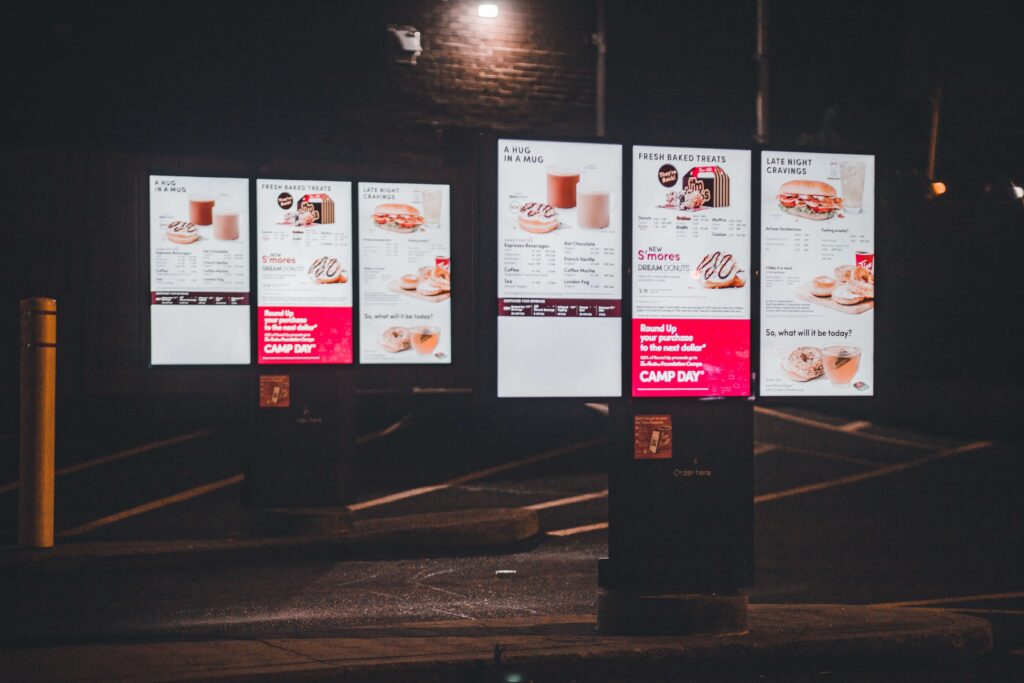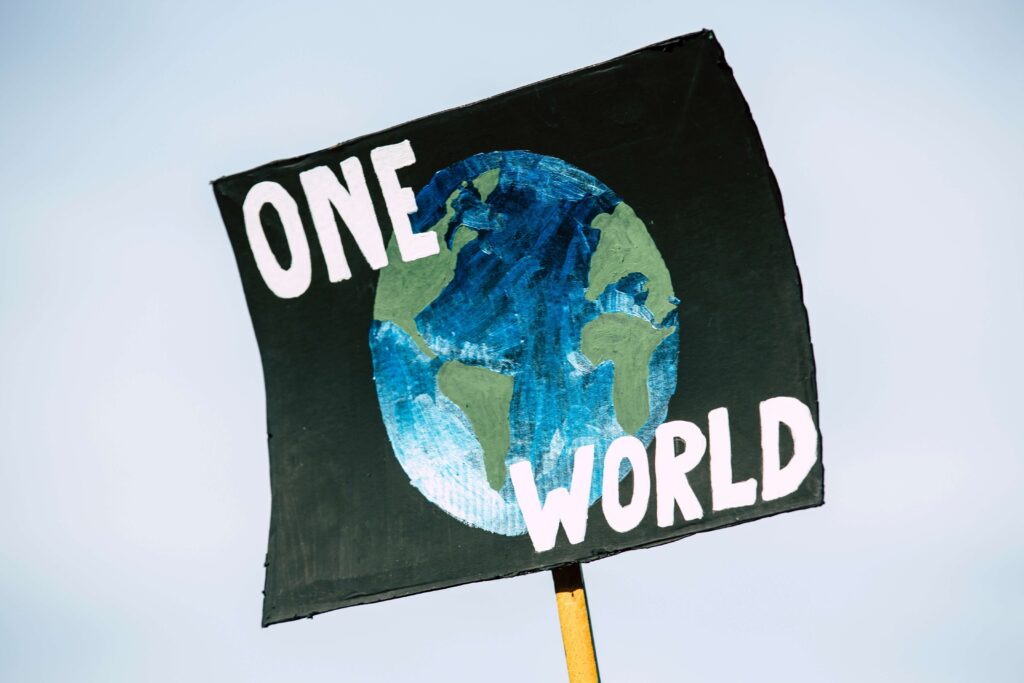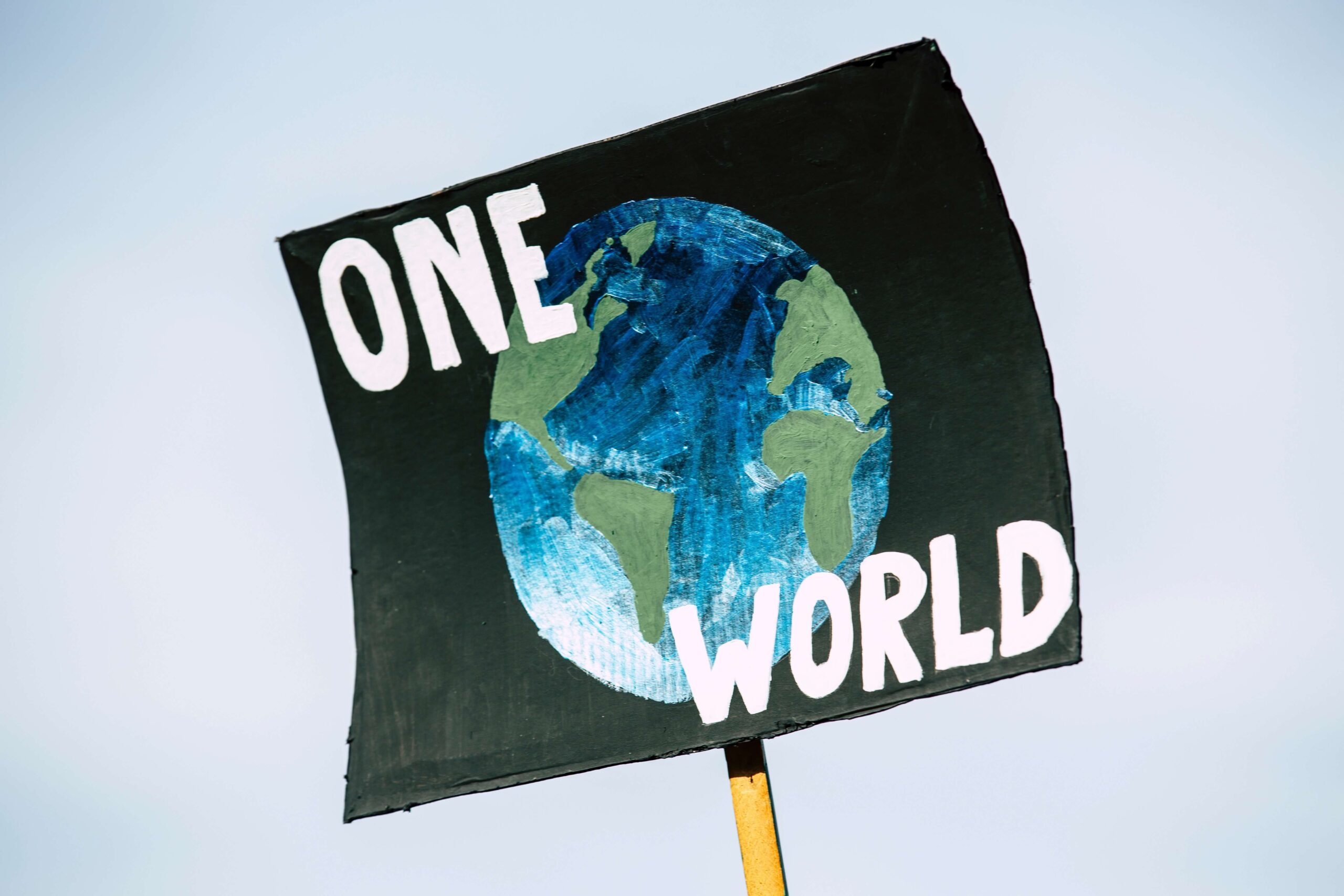The excessive use of plastic has led to growing concerns about increasing plastic pollution, promoting a shift towards using eco-friendly alternatives to plastic. In today’s world, people are becoming environmentally conscious and finding replacements for plastic. Plastic posters have been a popular choice for advertising; however, their environmental impact cannot be ignored. In this article, we will learn about eco-friendly alternatives to plastic posters. Let’s make positive changes for our planet.
The environmental impact of plastic posters
Plastic posters are made of polypropylene or PVC (Polyvinyl chloride). These materials are durable for making posters, but their environmental impact is significant. PVC is considered toxic when heated, it releases harmful chemicals into the air. These types of plastics are derived from fossil fuels and need chemicals such as chlorine, ethylene, and carbon for their production. It is considered non-sustainable, non-biodegradable, and difficult to recycle. After being used, it ends up in a landfill and takes hundreds of years to break down.
Introduction
Plastic posters have been a staple for advertising and communication campaigns due to their durability and affordability. However, the production and disposal of plastic posters contribute to pollution, which is a grave threat to our planet. As a result, individuals and businesses are switching to eco-friendly alternatives that align with their commitment to sustainability.
Eco-friendly alternatives to plastic posters
There is a rise in eco-friendly alternatives to plastic posters as many people are aware of the environmental impact of plastic pollution and want to switch to eco-friendly options. These alternatives not only reduce the use of non-renewable resources but also reduce plastic pollution.
There are many options available for eco-friendly posters.
1. Biodegradable Plastic Posters
Biodegradable posters are an alternative to traditional plastics. These posters are made from plant-based materials such as cornstarch, cellulose, etc. They can break down over time. They look and work similar to plastic and are kinder to the environment.
Benefits of using biodegradable posters.
Biodegradable posters are designed to break down naturally through natural processes.
- Many biodegradable plastics are plant-based; they are renewable and reduce the dependence on fossil fuels.
- Biodegradable plastics are non-toxic to the environment.
- Biodegradable plastics reduce carbon footprints compared to traditional plastics.
Manufacturing of biodegradable plastics
These plastics are made from plant-based materials such as cornstarch, seaweed, sugarcane bagasse, etc. These biodegradable materials are processed into sheets suitable for printing.
Disadvantages of using biodegradable plastics.
Biodegradable plastics look and feel the same as traditional plastics. They claim to be biodegradable and compostable, are they easily biodegradable?
This type of plastic needs to be composted in controlled composting facilities, where it will biodegrade in a specific amount of time. If they end up in a landfill, they will take the same amount of time as traditional plastics, which will take hundreds of years to degrade.
It is difficult to distinguish between regular plastic and biodegradable plastic. They are not always accepted by recycling facilities. They need to be composted separately; if not, they take a long time to break down in open environments like landfills.
2. Recyclable Posters
Another eco-friendly alternative to plastic posters is recycled or recyclable posters, which are made of material that can be recycled and transformed into new products. This helps in saving the earth’s natural resources, saving energy, and reducing waste.
How are recyclable posters made?
The recyclable posters are made up of recycled or recyclable materials such as paper, cardboard, and recycled plastic bottles. By using this type of material, this poster helps reduce waste going into landfills and promotes sustainability and a circular economy.
Consider environmentally friendly printing techniques, such as water-based inks and minimal use of adhesives.
3. Digital Posters

Digital posters are high-tech solutions and eco-friendly alternatives to plastic posters. This type of poster utilizes a digital display and is highly customizable. This type of poster eliminates the use of plastic materials and can be usable for a long time.
Advantages of using digital posters.
- Digital posters can be updated and customized easily, allowing real-time changes and personalized messaging.
- Digital posters utilize significantly less energy.
- Digital displays offer touchscreens and motion sensors that allow user engagement.
- 3D posters give a real-life experience to draw people’s attention.
Customization and creativity of digital posters.
The advantage of digital displays is that they are customizable according to the advertiser’s needs. Text and graphic content can be used to attract customers.
Effectiveness and sustainability
Digital posters use considerably less energy and can be used for a long time, making them eco-friendly and sustainable.
3D advertising has become a popular advertising option these days, it draws public attention and is highly customizable. It gives real-life experience
4. Paper-based Poster

The most popular eco-friendly alternative to plastic posters is using paper-based posters. Paper and cardboard are made from recycled paper or are recyclable after use. That means reducing waste going into landfills and reducing waste. If they end up in a landfill, they will biodegrade easily, so don’t harm our environment. This makes them an eco-friendly and sustainable choice as an alternative to plastic posters. For printing, use water-based or soy-based inks, further reducing environmental impact and making them easy to recycle.
Sustainable paper options
You must choose paper made from recycled materials or sustainably managed forests. FSC (Forest stewardship council) papers are made from sustainably sourced wood to make sure it does not contribute to deforestation or habitat destruction.
Reusability, recycling, and upcycling potential
Paper-based posters have the advantage of recycling and upcycling. After use it can be recycled contributing to a circular economy. In addition, paper posters can be used to create new products such as greeting cards, notebook covers, etc., reducing waste.
5. Fabric and Cloth Posters
Another great eco-friendly alternatives to plastic posters is using cloth posters. Fabric and cloth posters are made of natural materials such as cotton or linen, which are biodegradable and recyclable. They are high quality, strong and durable, making them a popular choice for advertising campaigns. This poster can be printed using eco-friendly inks and used in the long run, making them cost-effective.
Advantages of using fabric posters
- Cloth-based posters are biodegradable which makes them an eco-friendly choice.
- Fabric posters are recyclable which reduces waste and contributes to the circular economy.
- Fabric posters are durable and can be used multiple times, making them cost-effective in the long run.
6. Wood and Bamboo Posters

Wood and bamboo posters are a unique and eco-friendly alternatives to plastic posters. Made from sustainable materials and are biodegradable. These posters have new and earthy, making them perfect for promoting eco-friendly products.
Wood posters can be engrooved or printed with eco-friendly ink. They are durable and can be used both indoors and for outdoor campaigns.
Advantages of using wooden posters.
- Wooden posters are durable, sustainable, and biodegradable.
- It can be used multiple times by having a cloth cover with an advertisement on it. For other advertising, you just need to change the cover with new advertising. They can also be used as frames.
- Wooden posters can be used for a long time, making them cost-effective.
7. Chalkboards and Whiteboards

Chalkboard and whiteboard are other eco-friendly alternatives to plastic posters. They can be reused in multiple campaigns, making them cost-effective. Chalkboards and whiteboards can be used in various settings such as restaurants, schools, offices, and cafes. They add a unique touch to an advertising campaign and allow more creativity and personalization.
Advantages of having Chalkboards and whiteboards
- Chalkboards are commonly used in restaurants to write menus that can be changed every day.
- They are durable and long-lasting.
The cost and sustainability benefits of eco-friendly alternatives
Eco-friendly alternatives to plastic posters may have higher upfront costs, but they offer significant long-term cost savings and sustainability benefits. These alternatives are reusable, biodegradable, and recyclable, which helps reduce waste and prevent pollution. In addition, eco-friendly alternatives are often made from sustainable materials, resulting in a lower carbon footprint and reduced waste.
Conclusion and Call to Action
In conclusion, there are multiple options for businesses and individuals who choose sustainable alternatives for advertising. Eco-friendly posters are crucial for reducing waste and protecting our planet from plastic pollution.
Biodegradable posters, cloth posters, digital posters, paper-based posters, recyclable posters, and whiteboard and blackboard posters provide a range of options that combine visual appeal and eco-friendliness. By embracing these alternatives, we can promote a greener approach to marketing and communication while contributing to a greener planet.
Can eco-friendly posters be as durable as plastic ones?
Yes, eco-friendly posters are durable and long-lasting. Biodegradable posters are made from sturdy materials that can withstand various weather conditions.
Are eco-friendly alternatives more expensive?
The cost of eco-friendly products may vary depending on the materials used, printing techniques, and customization options. Some eco-friendly alternatives have high upfront costs, but last longer duration, and have a positive brand image.
Am Jeenath is an engineer in biotech with a diploma in clinical research. I am the mother of a son. And I love helping people live sustainably. I educate people on sustainable living and share sustainability tips, ideas, brands, and DIYs.

